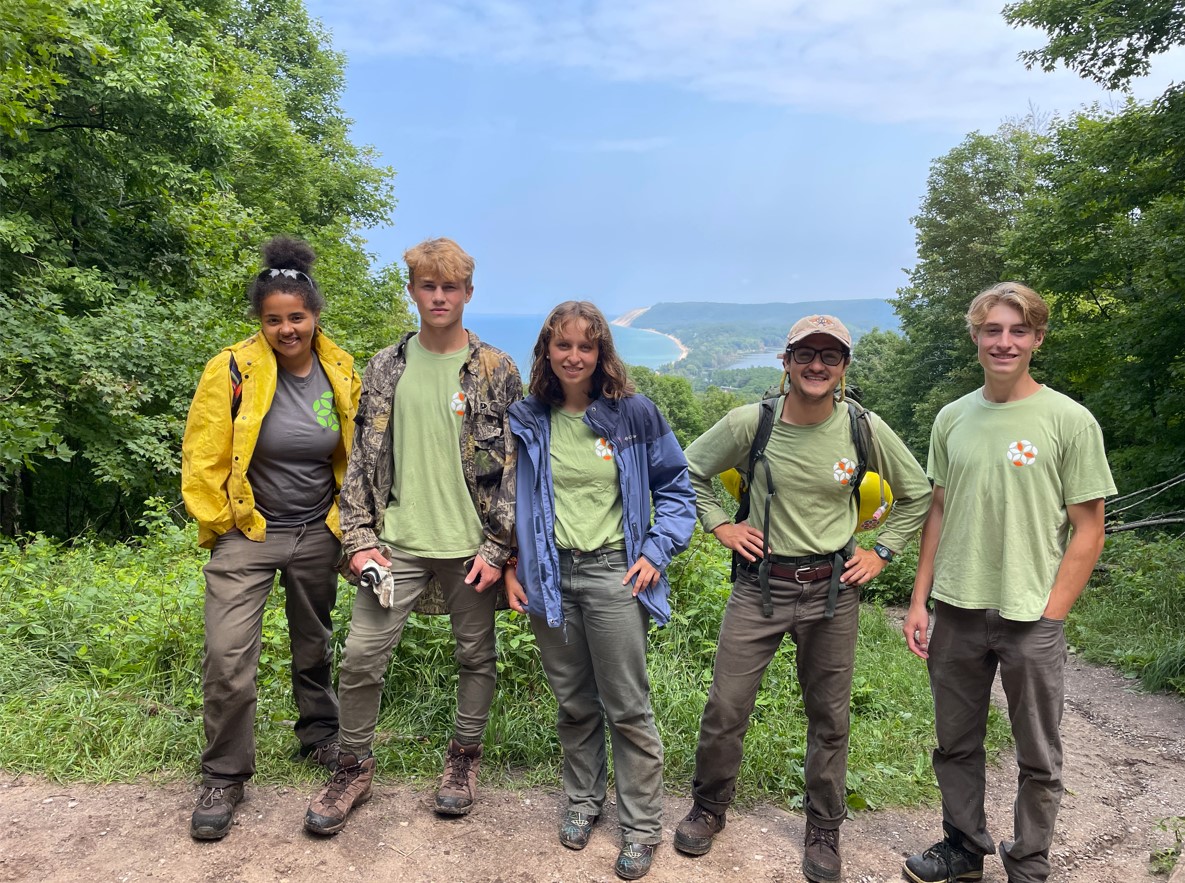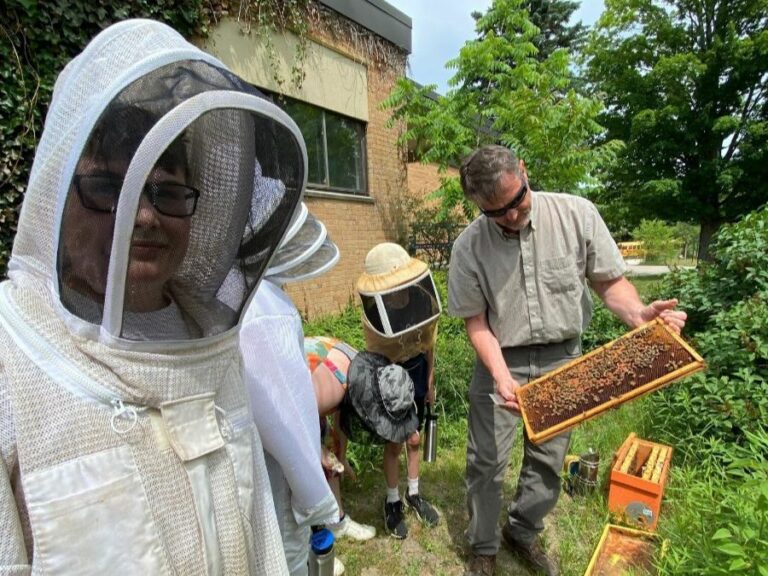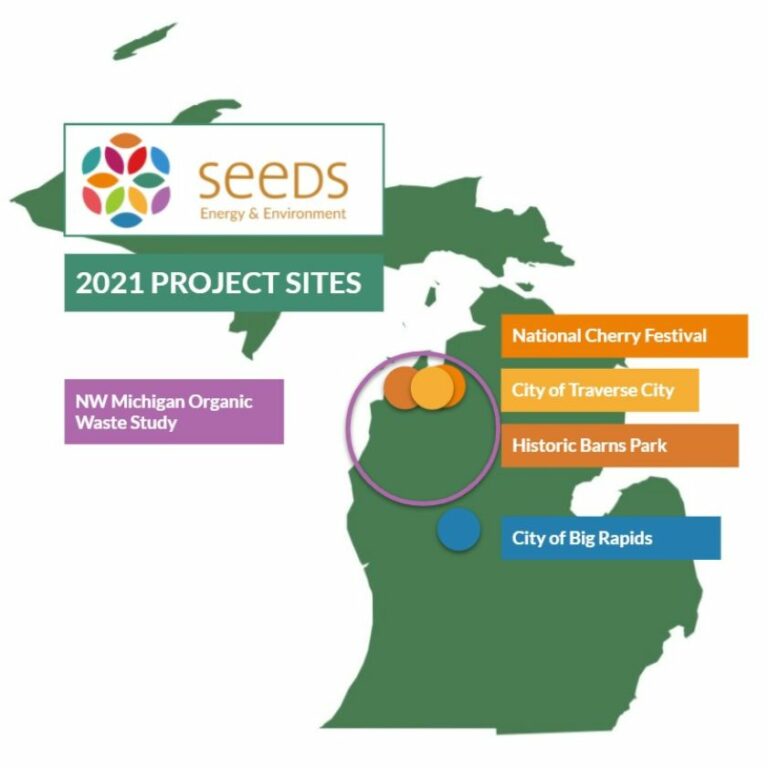
Above: EcoCorps crew members and leaders cleared three miles of trails on Alligator Hill this summer, in addition to other projects at Sleeping Bear. Pictured left to right: Isabell, Cael, Reeve, Girard, and Connor.
SEEDS EcoCorps completed another season of work at Sleeping Bear Dunes National Lakeshore thanks to support from the National Park Foundation (NPF) and training from National Park Service (NPS) employees.
EcoCorps crew members cleared overgrown trails, built drains to prevent erosion, repainted trail markers, cleared brush at historic farm properties, constructed and installed new signage, and assisted NPS staff in post-storm trail clearing including improvements to three miles of trail on Alligator Hill.
“I’ve been going to Sleeping Bear Dunes ever since I was young, so working there was really fun! Getting to work with the National Park Service and getting to understand how the park is maintained was just a really cool experience.” – EcoCorps Assistant Crew Leader, Isabell Astor
EcoCorps crews did all this using hand tools, not big machinery including clearing downed trees from multiple areas of the Park using both manual two-person cross-cut saws and chainsaws! Crews also replaced a boardwalk in Glen Haven.
Above: EcoCorps crew leader Andy prepares the ground for the new boardwalk in Glen Haven.
As the NPS works to address its significant deferred maintenance backlog with additional funding from the historic, recently-enacted Great American Outdoors Act, NPF is proud to continue engaging young leaders through service corps like SEEDS EcoCorps.
Service corps programs offer great opportunities to gain leadership skills and give back to national parks. The National Park Foundation and our partners are proud to support programs that make lasting positive impacts for both parks and people. – Will Shafroth, president and CEO of the National Park Foundation
As of spring 2021, National Park Foundation-supported service corps crews contributed nearly 60,000 hours of service at more than 50 national park sites, including restoration of over 900 acres of natural habitat, removal of more than 40,000 pounds of trash and litter, and the planting of over 30,000 trees and plants.



